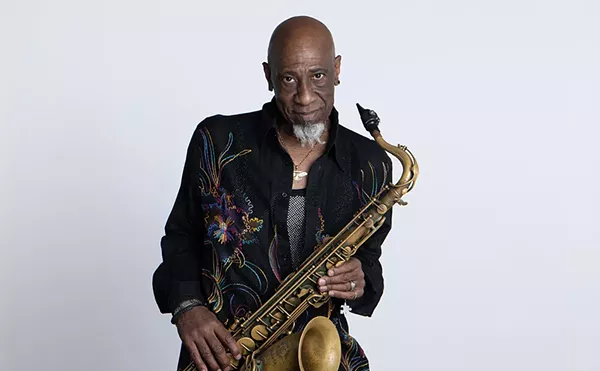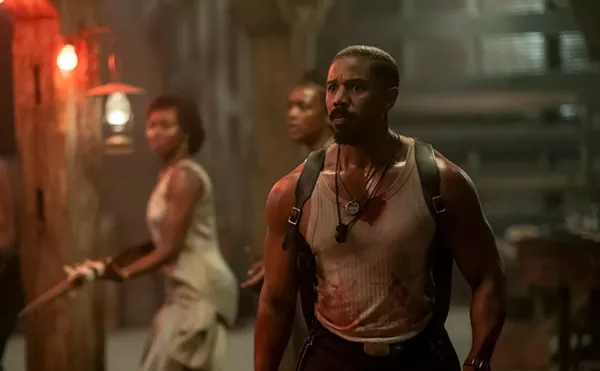
Audio By Carbonatix
[
{
"name": "GPT - Leaderboard - Inline - Content",
"component": "35519556",
"insertPoint": "5th",
"startingPoint": "3",
"requiredCountToDisplay": "3",
"maxInsertions": 100,
"adList": [
{
"adPreset": "LeaderboardInline"
}
]
}
]
Vincent Gallo is a natural-born iconoclast, an actor-artist-musician-model whose primary role is that of a cultural and aesthetic agent provocateur. Since he functions as this film's writer, director, composer and star, it's easy to state that Buffalo '66 is resoundingly his. But Gallo manages to go deeper than that: Every frame seems infused with his particular sensibility.
In Buffalo '66, Gallo plays Billy Brown, a sad sack recently released from prison whose twin obsessions are impressing his neglectful parents and enacting an oblique revenge on a member of the Buffalo Bills. Gallo's central performance is rife with jittery neuroses, like a toy that's been wound too tight and forgot its natural rhythms. But underneath Billy's often comic bravado is an ever-present pain that ripples under his skin like spasmodic muscles.
Shortly after arriving in his hometown of Buffalo, Billy kidnaps Layla (Christina Ricci) so she can impersonate the fictitious wife he's created for his parents' benefit. His sole directive to her is to "make me look good."
Choosing Layla as his respectable "wife" is an apt example of Billy's warped judgment: She's an overripe, pouty adolescent, dressed in a powder-blue baby-doll dress (with tights and eye shadow to match) and silver-glitter tap shoes, her straight blond hair framing her unquestioning face.
But getting a glimpse of Billy's home life explains quite a lot. His father, Jimmy (Ben Gazzara), is a dismissive bully. His distracted mother, Janet (Anjelica Huston), is an obsessive football fan. Billy was named after her beloved Buffalo Bills. Both are perpetual losers.
During the course of Buffalo '66, the layers of Billy's psyche are carefully peeled away and his relationship with Layla (who remains enigmatic, but obviously shares his need for love and acceptance) grows into something unexpectedly tender.
Gallo uses the medium of film like an artist, exploring the possibilities of its visual language (and creating a far more arresting work than painters-turned-filmmakers Julian Schnabel and David Salle). The intense, saturated color photography by Lance Acord strips away the distancing gloss of Hollywood films. Gallo utilizes superimposed images as a clever way to introduce flashbacks, as if they were the filmic representations of cartoon thought balloons.
Unexpected musical numbers and a startling scene of stop-action violence blend perfectly with Gallo's other idiosyncratic choices (which include casting Hollywood burn-outs Mickey Rourke and Jan-Michael Vincent).
The scene where Billy delivers a long monologue while the camera stays fixed on Layla's face is a superb example of his philosophy. With Buffalo '66, Vincent Gallo side-steps the conventional wisdom of filmmaking, choosing instead to make a personal work of art.
Serena Donadoni writes about film for the Metro Times. E-mail her at letters@metrotimes.com.





